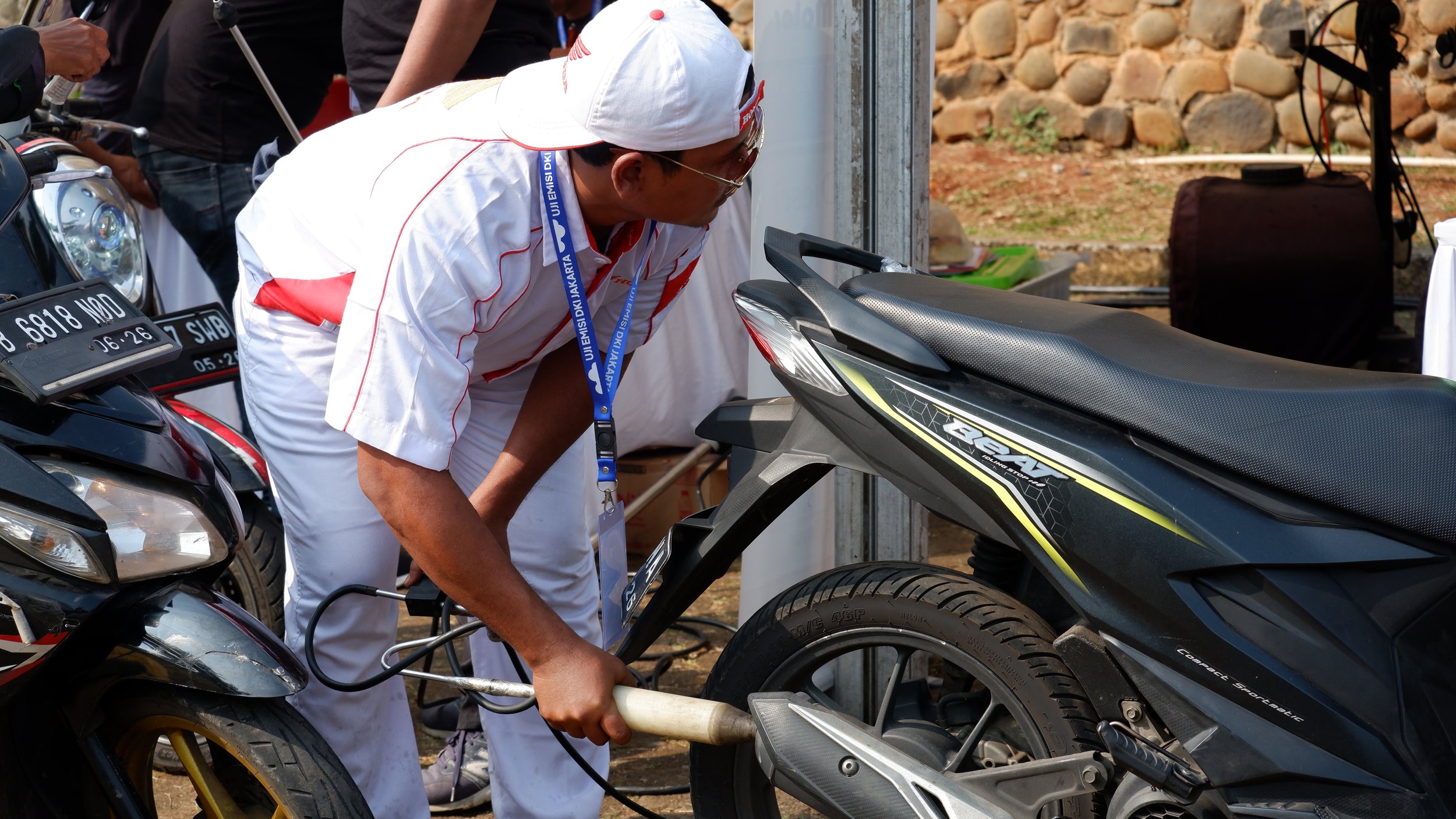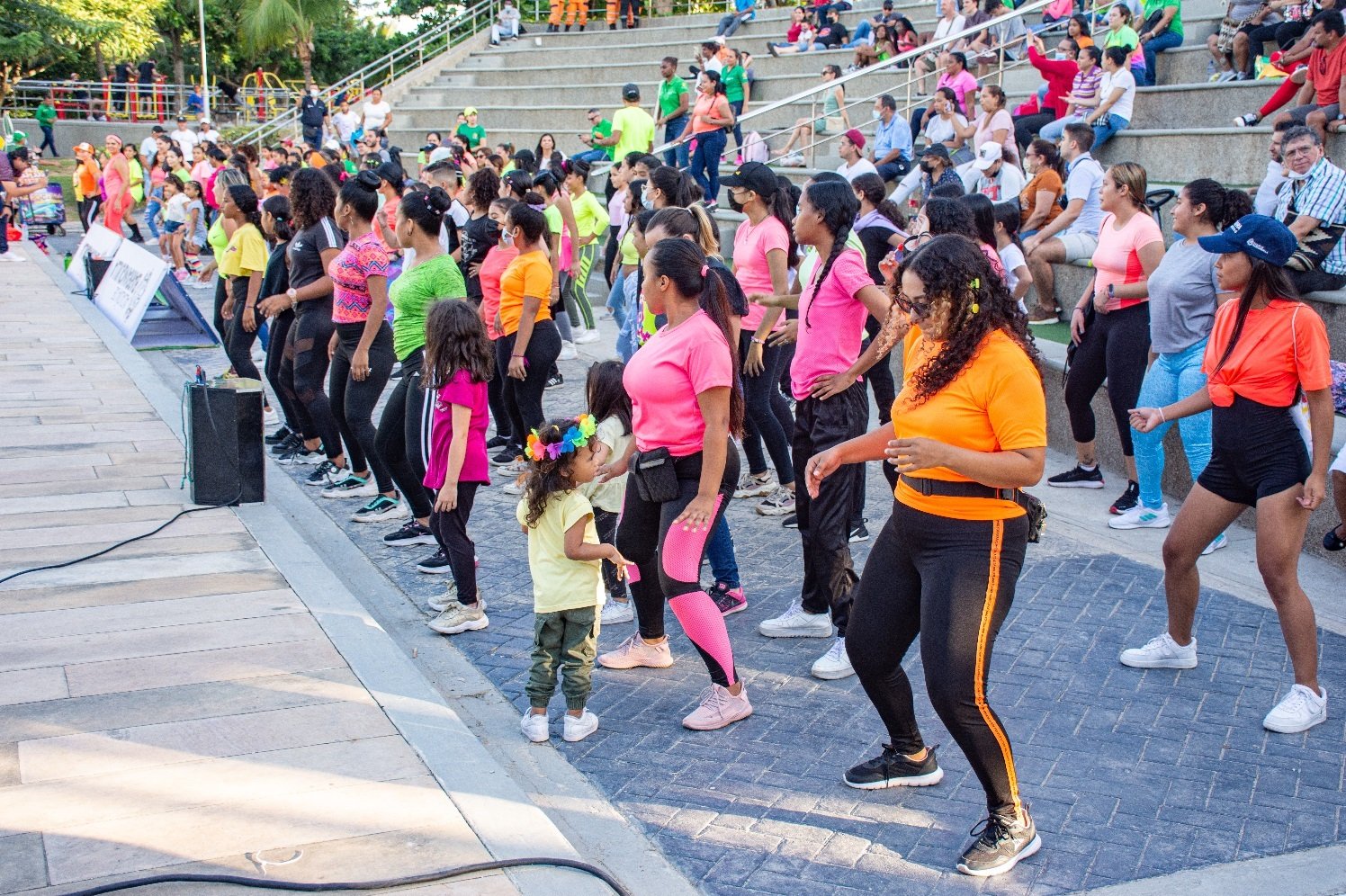
Using data on health impacts to prioritize clean air action
Jakarta, Indonesia
Case study developed in partnership with the Jakarta Environment Agency (Dinas Lingkungan Hidup) and the Provincial Government of DKI Jakarta
10.5 M
Jakarta population size
7.8 times
the WHO air quality guideline of 5 μg/m3
(39 μg/m3 annual average PM2.5 concentrations)
$15,840
GDP per capita PPP
619 MtC02e
National GHG emissions per capita
Sources of emissions
Transportation
Coal
Construction
Resuspended Soil
Open Burning
Transportation is the leading source of emissions in Jakarta.
Overview
Jakarta, Indonesia is a bustling city that has an estimated 25 million motorized vehicles, many of which travel in from outside the city boundaries. During the dry season between May to September, residents are exposed to dangerously high levels of pollution, with daily concentration of PM2.5 pollutants as high as 80 μg/m3. In 2019, a source apportionment study conducted in Jakarta showed that during the dry season, up to 57% of PM2.5 emissions came from vehicles-illustrating that transport is a key contributor to air pollution in Jakarta. More information on the sources of air pollution in Jakarta can be found in this report.
Photo Above: With more than half of air pollution coming from vehicles, vehicular emissions is the largest source of air pollution in Jakarta.
Although Jakarta has been battling polluted air for decades, the local government only began to take the problem more seriously in recent years. In July 2019, a citizen lawsuit was filed against seven public officials, including the country’s president and minister of health, and the governor of DKI Jakarta, alleging that they failed to uphold citizens’ rights to clean air. In September 2021, after a two-year legal challenge, the central Jakarta district court ruled for the plaintiffs, imposing requirements on the national and local governments.
In early 2023, a new study published by Vital Strategies and the Environment Agency of DKI Jakarta estimated that air pollution potentially caused more than 10,000 deaths, more than 5,000 hospitalizations for cardio-respiratory diseases, and more than 7,000 adverse health outcomes in children each year in Jakarta. The total economic burden attributable to air pollution was estimated to be US$ 2.9 billion (2.2% of DKI Jakarta’s gross regional domestic product.) The study used local health and economic data to quantify and assess impacts of air pollution in Jakarta, both on mortality and adverse health outcomes in children, providing timely evidence needed to guide city policymakers as they prioritize clean air actions to be taken to promote the public’s health. More information about the study is available here. These research results regarding have been an important motive for the city government’s clean air commitments.
Impact
Elevating the linkages between climate, air pollution and health in Jakarta has been a gradual process and is yielding results. DKI Jakarta has partnered with international NGOs, including the World Resources Institute and Vital Strategies, to formulate and guide clean air action. Vital Strategies partnered with the city health agency to develop and implement plans to improve awareness of air pollution health effects in the health sector. Vital worked closely with CIMSA (Indonesia Center for Medical Students) to conduct health promotion and education related to health impacts of air pollution.
Photos Above: For World Environment Day in June 2023 in Jakarta, medical students conducted a health promotion and education on the health impacts of air pollution and how to protect people from exposure. In addition, they also performed general health assessment, such as checking blood pressure, blood uric acid level, and blood glucose level.
In 2023, El Niño weather conditions and ever-rising human emissions have created an especially dangerous spike in pollution. In response, the Jakarta environment agency has laid out an action plan for air pollution control, promulgated through the Jakarta Governor’s Decree No. 576/2023. To support the implementation of those actions, Vital Strategies collaborated with the Jakarta environment agency and researchers from universities (Universitas Padjadjaran and Institut Teknologi Nasional) to conduct a cost-benefit analysis of the actions. The study found that if implemented effectively, the policy action of routine vehicle emissions compliance testing has the one of the best returns on investment when weighing health benefits against program implementation costs. These health benefits include averted premature deaths from air pollution, as well as reducing adverse health outcomes in children including infant deaths, stunting and premature birth.
As a direct result of the study, a mass emission testing event was conducted on World Environment Day in June 2023. Jakarta also invited heads of environment agencies from the surrounding cities of Tangerang, Tangerang Selatan, Bekasi, Bogor, and Depok, to sign an agreement to embark on joint air pollution control efforts. This is an important step as it acknowledges that air pollution is a transboundary issue and that regional cooperation is needed for clean air action.
Photo Above: A staff from the Environment Agency of DKI Jakarta carries out a routine maintenance for an Air Quality Monitor at the Hotel Indonesia Roundabout, Central Jakarta, Indonesia. This tool monitors four gaseous pollutants (SO2, NOx, CO, O3) and two particulate matter pollutants (PM10 and PM2.5).
Photo Above: Emissions testing in progress at the mass emissions testing event on World Environment Day.
Health highlights
Using local data from 2018 and 2019, a recent health impact assessment found that air pollution in Jakarta has potentially caused more than 10,000 deaths, more than 5,000 hospitalizations for cardio-respiratory diseases, and more than 7,000 adverse health outcomes in children each year. The total economic burden attributable to air pollution was estimated to be US$ 2.9 billion (2.2% of DKI Jakarta’s gross regional domestic product.) These research results about the negative health and economic impacts from air pollution has been an important motive for the city government’s clean air commitments.
The city is developing plans to improve awareness of air pollution health impacts in the health sector. This includes working with CIMSA (Indonesia Center for Medical Students) to conduct health promotion and education about the health impacts of air pollution.
The city has relied on health data and benefits to prioritize the implementation of actions for air pollution control. Through a cost-benefit analysis, the city found that routine vehicle emissions compliance testing has one of the best returns on investment when weighing health benefits against program implementation costs. As a result, they are now stepping up enforcement and implementation of vehicle emissions tests.
Lessons learned
Support from high-level officials is paramount. Building awareness among leaders about air pollution and especially its health impacts, and potential benefits from its improvement, drives a sense of urgency which is essential to keep the issue on their list of priorities.
Public advocacy is an important motivator of governmental action. In Indonesia, the victory from the citizen’s lawsuit has been a significant step in making air quality a political priority. It also highlights the importance of citizen and human rights as a cornerstone to demanding change.
Data integration of available, but underutilized city data can support clean air prioritization. Jakarta supplemented its statistical agency data with air quality monitoring data, vital statistics and health care utilization data to enable a holistic analysis of exposure, sources and health impacts
Understanding the specific sources of emission is essential for targeted control measures. However, pinpointing the exact contributors can be difficult. Even low-cost efforts at source apportionment and emissions inventorying can yield data for prioritizing source control strategies.
Cross-sector collaboration and coordination is critical. Developing effective policies to control air pollution is one thing, but ensuring their successful implementation and enforcement is another challenge that requires numerous convenings among multiple stakeholders. Multi-sectoral collaboration can be challenging due to limited and unequal understanding about the urgency of air quality issues. In Jakarta, it has been aided by the encouragement of knowledge sharing across multiple agencies so that all stakeholders/sectors involved are aware of their roles and responsibilities to achieve the objectives of the programs/strategies.
Encouraging sustainable results is crucial. This may require a collaborative approach, long-term goals, consistent funding and resources, and public understanding of the issue.
Strategic partners
The city would like to acknowledge the following partners in supporting its clean air and climate journey:















